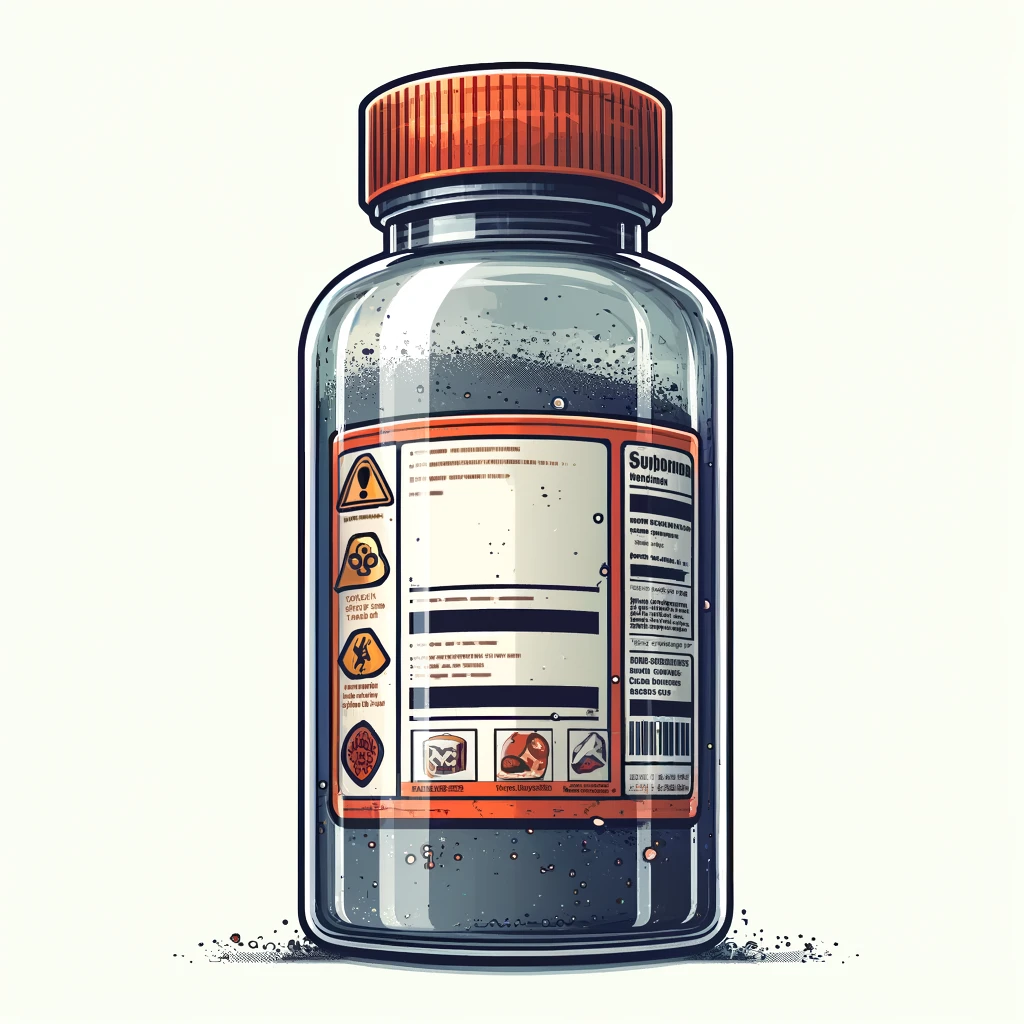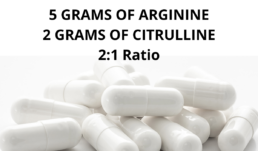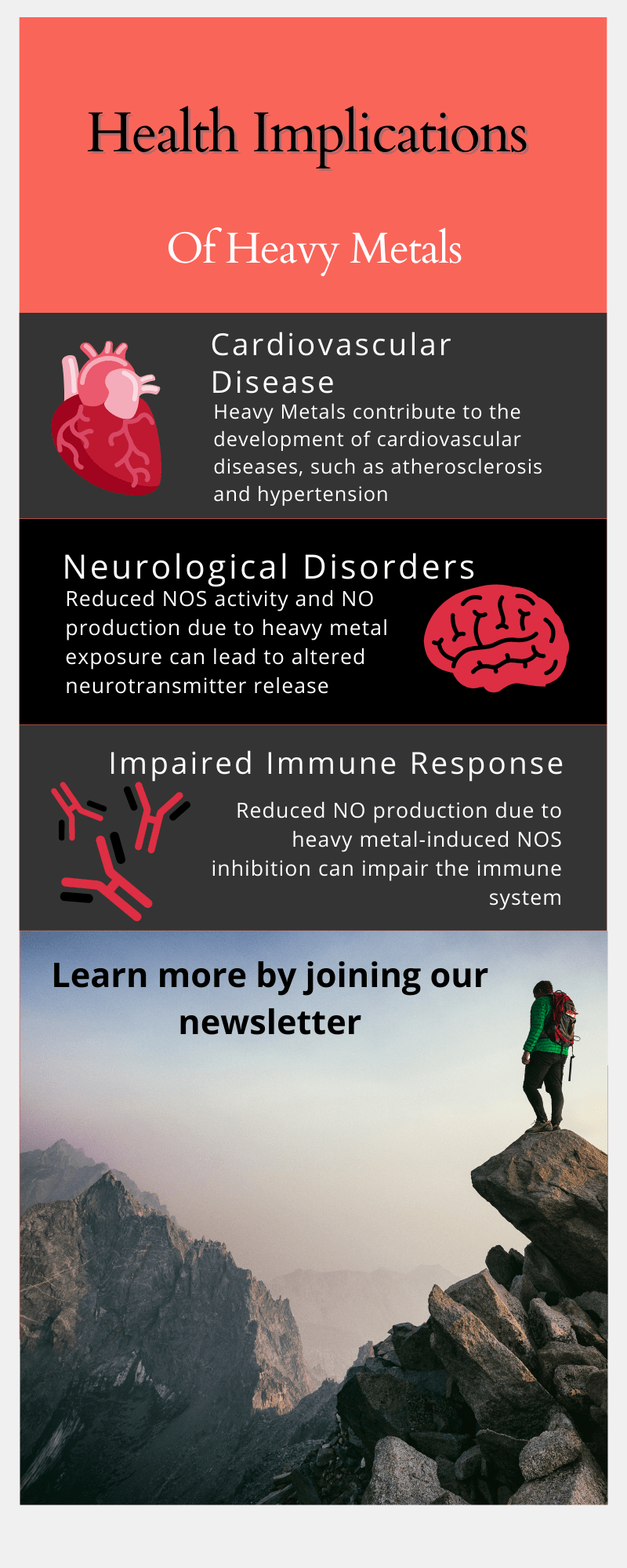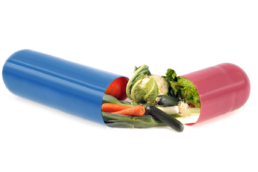Clean Nitric Oxide: The Pure Path to Enhanced Health and Performance

Understanding Nitric Oxide
Nitric oxide is a powerful, naturally produced gas molecule. It plays a vital role in the body’s overall healthy functioning. Nitric oxide acts as a key signaling molecule within the vascular system as well. It does this by prompting blood vessels to relax and dilate. This process significantly enhances blood flow throughout the body. Thus ensuring that vital organs and muscles receive an optimal supply of oxygen and nutrients. The role of nitric oxide extends beyond vascular health. It touches many physiological processes crucial for maintaining homeostasis.
Nitric Oxide & Your Heart
The impact of nitric oxide on cardiovascular health is profound. By facilitating vasodilation, nitric oxide helps to regulate blood pressure. It also helps by improving the health of blood vessels. This thereby reduces the risk of cardiovascular diseases such as atherosclerosis, hypertension, and heart failure. Its role in cardiovascular health is a cornerstone of preventative wellness strategies and therapeutic approaches for heart-related conditions.
Exercise Performance
In terms of exercise performance, nitric oxide is equally influential. Its healthy circulation effects lead to improved oxygen delivery to muscles. This in turn enhances endurance and strength, reduces fatigue, and speeds up recovery times. Athletes and fitness enthusiasts often turn to nitric oxide supplements to leverage these benefits. Many can ofter surpass their performance thresholds and achieve new personal bests. The efficiency of nutrient delivery and waste removal in muscles directly correlates with one’s ability to perform and recover. This makes nitric oxide a critical component of any fitness regimen.
The Need for Clean Nitric Oxide
The pursuit of wellness and enhanced performance has led to the popularity of nitric oxide supplements. Yet, the quest for health benefits must not overlook the paramount importance of purity in these supplements. Here, we explore the risks linked to impurities and the potential for contaminants to diminish nitric oxide’s effectiveness. We also go into the quality of products like Ultimate Nitric Oxide Nutrition.
Risks Associated with Impure Nitric Oxide Supplements
- Introduction of Toxin. Supplements contaminated with heavy metals or harmful chemicals can introduce toxins into the body, posing significant health risks.
- Adverse Health Effects. Impurities in nitric oxide supplements can lead to unwanted side effects. These can cause allergic reactions or more severe health complications. This undermines the primary intent of supplementation.
How Contaminants Can Negate the Benefits of Nitric Oxide
- Reduced Efficacy: Contaminants can interfere with the body’s ability to absorb and utilize nitric oxide, reducing its vasodilatory and health-promoting effects.
- Inflammation and Oxidative Stress: Instead of benefiting from nitric oxide’s potential to combat inflammation and oxidative stress, impure supplements may exacerbate these conditions.
Concerns Over Products Made in China
- Quality Variability: Supplements sourced from China may face scrutiny due to inconsistent quality control and regulation standards, potentially affecting purity.
- Risk of Contamination: The higher incidence of contaminants in some products from this region raises concerns over the safety and efficacy of these supplements.
Amino Acids Derived from Human Hair vs. Fermentation Process
- Source Matters: Many consumers are unaware that some amino acids in supplements are derived from sources like human hair or duck feathers, raising ethical and quality concerns.
- Ultimate Nitric Oxide Nutrition’s Commitment to Purity: Unlike these methods, Ultimate Nitric Oxide Nutrition utilizes a fermentation process for amino acid production. This method not only ensures a vegan and ethical product but also guarantees a higher purity level, devoid of the contaminants and ethical issues associated with other sources.
Clean Nitric Oxide
The focus on clean nitric oxide supplementation is more than a matter of efficacy; it’s a commitment to safety, ethics, and quality. Ultimate Nitric Oxide Nutrition exemplifies this commitment, providing a pure, potent, and ethically produced option for those seeking the myriad benefits of nitric oxide without the risks associated with impurities and questionable manufacturing practices.
Ultimate Nitric Oxide Nutrition sets itself apart in the world of supplements by being completely stimulant-free. This distinct characteristic is crucial for individuals seeking health benefits without the unwanted side effects often associated with stimulant-laden products.
Stimulant-Free Advantage
- No Jitters or Anxiety: Unlike many supplements that rely on stimulants like caffeine for a temporary energy boost, Ultimate Nitric Oxide Nutrition provides sustained energy without causing jitteriness, anxiety, or the dreaded crash.
- Better Sleep Quality: The absence of stimulants means that Ultimate Nitric Oxide Nutrition won’t interfere with sleep patterns. This is particularly important for those who prioritize recovery and rest as part of their health regimen.
- Broader Audience Appeal: By being stimulant-free, Ultimate Nitric Oxide Nutrition is suitable for a wide range of individuals, including those sensitive to caffeine or other stimulants, and those with conditions that necessitate avoiding such compounds.
Sustained Energy and Performance
- Ultimate Nitric Oxide Nutrition harnesses the power of nitric oxide to improve blood flow and oxygen delivery to tissues. This process supports enhanced physical performance and energy levels naturally, without the need for stimulants.
Heart Health and Wellbeing
- The formulation of Ultimate Nitric Oxide Nutrition is designed not only to enhance performance but also to support cardiovascular health. The stimulant-free nature of the product ensures that users can enjoy these benefits without risking the negative side effects on heart rate or blood pressure that stimulants can induce.
Commitment to Purity and Health
- The choice to keep Ultimate Nitric Oxide Nutrition stimulant-free reflects a deep commitment to purity and the overall health of its users. It aligns with the goal of providing a supplement that offers benefits derived from its active ingredients’ natural properties, not from artificial and temporary stimulant effects.
Ultimate Nitric Oxide Nutrition’s stimulant-free formula is a testament to the belief that true health and performance enhancement can be achieved through natural, clean, and ethical means. It offers a safe, effective alternative to those looking to improve their health, fitness, and well-being without compromising their comfort or safety.
Do Amino Acids Boost Nitric Oxide?
Do Amino Acids Boost Nitric Oxide? If you have heard about l-arginine or l-citrulline and their potential for elevating nitric oxide levels, you may have asked yourself that question.
Some amino acids do, in fact, help your body produce nitric oxide, some do not, and some may work for younger people and not as well as you age. Let’s dive into what Aminos help with Nitric Oxide and also what other things they can do.

L-Arginine
- Boosts Nitric Oxide? Yes.
- Health Benefits: L-Arginine is a precursor to the production of nitric oxide, making it critical for NO synthesis in your body. It also supports protein synthesis, wound healing, and immune function. It works best when combined with L-Citrulline. Together, they provide more of a nitric oxide boost than just one taken alone. There is so much information out there on arginine, it has literally hundreds of thousands of studies. It has been shown to boost nitric oxide time and again.
- Reference: NIH – Arginine
L-Citrulline
- Boosts Nitric Oxide? Yes.
- Health Benefits: L-Citrulline increases arginine levels in the body, which in turn helps increase NO production. This may seem counterintuitive and begs the question, “Why not just take L-Arginine?”. This is a great question and one that has been addressed by tons of recent research. The choice between L-arginine and L-citrulline isn’t about which one is “better,” but which one might be more effective for specific purposes due to their different metabolic pathways and absorption rates.
Here are some reasons why L-citrulline is different from L-arginine:
Better Absorption:
L-citrulline is absorbed more efficiently in the intestines than L-arginine typically. When you consume L-arginine, a significant portion can be broken down in the liver before it reaches systemic circulation and can be used by your body. L-citrulline bypasses this extensive first-pass metabolism in the liver, and once it is absorbed, part of it is converted to L-arginine in the kidneys.
Sustained Increase in Blood Arginine Levels: The conversion of L-citrulline to L-arginine in the kidneys results in a more sustained increase in blood arginine levels compared to consuming L-arginine directly. This prolonged elevation could produce more consistent nitric oxide over time for many individuals.
Lowered Risk of Gastrointestinal Distress: L-arginine can cause gastrointestinal distress at high doses. This is not the case for equivalent doses of L-citrulline. Some forms of Arginine, however, are easier to digest than others.
Synergistic Effects with Other Metabolites: L-citrulline is part of the urea cycle, and its metabolism might have added benefits due to the other metabolites in this cycle, like L-ornithine. So again, it still produces L-Arginine in your system, but it has a few extra goodies in it.
Safety and Tolerability: L-citrulline, especially when derived from natural sources like watermelon, can be a safer and more tolerable option for some people. ( Yup, we use Watermelon in our products! )
Other Potential Benefits: There’s ongoing research into L-citrulline’s potential advantages beyond just nitric oxide production, including muscle protein synthesis and ammonia detoxification, immunity, and so much more. It may enhance exercise tolerance in people with certain cardiovascular conditions, support the heat, veins, and arteries, and a long list of other potential benefits. - Reference: Citrulline and Exercise Performance
L-Lysine
- Boosts Nitric Oxide? No.
- Health Benefits: L-lysine is vital for protein synthesis, normal hormone production, and calcium absorption. It’s also often used to prevent and treat cold sores (herpes simplex labialis).
- Reference: NIH – Lysine
Taurine
- Boosts Nitric Oxide? Not directly.
- Health Benefits: Taurine has several functions, including maintaining proper hydration and electrolyte balance in cells, forming bile salts, and supporting the general function of the central nervous system and eyes. Taurine supports heart health by helping to regulate blood pressure and heart rate. It may help reduce the risk of cardiovascular disease by possibly improving the levels of blood lipids and reducing systemic inflammation.
- Reference: Taurine: A “very essential” amino acid
L-Tyrosine
- Boosts Nitric Oxide? No.
- Health Benefits: L-Tyrosine is important for producing neurotransmitters that regulate mood, such as dopamine, norepinephrine, and epinephrine. It is a common ingredient in many nootropic supplements and some energy drinks. These neurotransmitters that L-tyrosine helps produce, especially epinephrine and norepinephrine, are essential for the body’s stress response. During stress, these neurotransmitters are released to potentially help prepare the body to respond, leading to increased heart rate, blood flow to essential organs, and alertness. Proper synthesis and function of these neurotransmitters are critical for an appropriate stress response. Norepinephrine plays a role in constricting blood vessels, which can elevate blood pressure. Individuals with certain conditions that involve an imbalance in neurotransmitter production could benefit from L-tyrosine supplementation to help regulate blood pressure. However, it’s also worth noting that excessive norepinephrine can lead to hypertension, so it’s a delicate balance.
- Reference: NIH – Tyrosine
L-Glutamine
- Boosts Nitric Oxide? No.
- Health Benefits: Glutamine is the most abundant amino acid in the bloodstream and serves multiple vital functions in the body. L-glutamine supports gut health, immune function, and wound healing. It’s also a vital nutrient for rapidly dividing cells, including those of the gut and immune system. Even though it does not produce nitric oxide, glutamine is incredibly useful for supporting the body’s creation of Glutathione, an essential antioxidant.Glutathione (GSH) is a tripeptide, meaning it is composed of three amino acids: cysteine, glutamate (derived from glutamine), and glycine. The synthesis of glutathione in the body occurs in two main steps:
- First Step: The enzyme γ-glutamylcysteine synthetase catalyzes the binding of cysteine to glutamate to form γ-glutamylcysteine. This step is rate-limiting, meaning it’s the slowest step in the synthesis process and often determines the overall rate of glutathione production.
- Second Step: The enzyme glutathione synthetase adds glycine to the γ-glutamylcysteine molecule, forming glutathione.
- Reference: Glutamine: Metabolism and Immune Function, Supplementation and Clinical Translation
L-Leucine
- Boosts Nitric Oxide? No.
- Health Benefits: L-Leucine is a branched-chain amino acid (BCAA) that is important for protein synthesis and muscle repair. It also helps regulate blood sugar levels.
- Reference: Leucine as a pharmaconutrient to prevent and treat sarcopenia and type 2 diabetes
L-Isoleucine
- Boosts Nitric Oxide? No.
- Health Benefits: Another BCAA, L-Isoleucine is crucial for hemoglobin production and might help with glucose consumption during physical activity.Many products use L-Isoleucine, especially within the sports nutrition and bodybuilding sectors. It’s a common ingredient in protein powders, amino acid supplements, and many recovery drinks. The use of L-Isoleucine, alongside the other BCAAs, is touted for its potential to enhance muscle recovery, reduce muscle soreness, and improve athletic performance in healthy individuals. This stems from BCAAs’ role in muscle protein synthesis and energy production during exercise and has been widely researched.Beyond athletic performance use, L-Isoleucine has several potential health benefits that may be of interest. Firstly, there’s some evidence that it may support blood sugar regulation. L-isoleucine can increase the uptake of glucose into muscle cells and improve glucose metabolism, which can be particularly beneficial after periods of physical activity when muscle cells are more receptive to glucose. By supporting glucose uptake and utilization, L-Isoleucine might play a role in maintaining stable blood sugar levels.L-isoleucine can also promote wound healing. Amino acids are the building blocks of proteins, and proteins, such as collagen, are essential for the repair and regeneration of tissues. Therefore, having an adequate supply of essential amino acids, including L-Isoleucine, can support the body’s natural healing processes.Additionally, as with other amino acids, L-Isoleucine is involved in synthesizing various proteins and enzymes critical for numerous physiological processes. This means that an adequate intake is vital for overall health, ensuring that the body has the necessary components to carry out its daily functions efficiently.While L-isoleucine is popularly recognized for its role in sports nutrition, its impact on health is multifaceted. L-Isoleucine plays an integral role in maintaining health and well-being, from supporting glucose metabolism to promoting tissue repair and being a foundational component for protein synthesis.
- Reference: Amino Acid Properties and Consequences of Substitutions
L-Valine
- Boosts Nitric Oxide? No.
- Health Benefits: As the third BCAA, L-Valine promotes muscle growth and tissue repair. It’s also involved in energy production.
- Reference: BCAAs and Brain Function
L-Methionine
- Boosts Nitric Oxide? No.
- Health Benefits: L-methionine is essential for tissue growth, absorption of minerals, and the production of essential molecules like taurine, L-cysteine, and L-carnitine.
- Reference: Methionine metabolism: Major pathways and enzymes involved and strategies for control and diversification

Do Amino Acids Boost Nitric Oxide?
The answer is yes; some do, as can be seen above. With Argnine and Citrulline both being important. There are a few important things to note: how to take them, when, and in what ratios.
Do Amino Acids Boost Nitric Oxide when taken in small dosages? Will the typical $29.99 so-called Nitric Oxide booster really produce nitric oxide in my body?
The answer is yes, but the real question is how long do they produce it? Therein lies the issue. Your cheap 1000mg arginine product or 500mg citrulline product will produce nitric oxide in your system for a very short period of time, producing very minimal health or energetic effects. Most studies indicate that around 5 grams of arginine and 2 grams of citrulline are ideal, and they must be taken together for maximum effect. That is roughly a 2:1 ratio.

Where do Amino Acids Come From?
Amino acids used in supplements and for food items and human consumption are typically manufactured via two main methods: extraction from natural sources and bacterial or yeast fermentation. Both methods have their own advantages and special considerations. Let’s explore these methods and address the concerns of purity, cleanliness, and potential contaminants. If you are considering using amino acids, knowing where they come from, how they are made, and safety concerns should help you make a better decision on what kinds to use and from what source.
- Extraction from Natural Sources:
Some amino acids are derived directly from protein-rich natural sources like animal tissues or certain plants. The raw materials used in this process are subjected to something called ‘hydrolysis,’ which is the process of using acid or enzymes to break down the proteins into individual amino acids. After this is complete, various purification processes are performed to obtain the specific amino acids in their purest form. - Bacterial or Yeast Fermentation:
For many different types of amino acids, especially those that are labeled as vegan or vegetarian, bacterial or yeast fermentation is the primary method of production. Some types of aminos are not yet available via this method.The bacterial and yeast fermentation processes can produce a wide range of amino acids. However, the capability to produce many types of specific amino acids often depends on the microbial strain used and its metabolic pathways. While many amino acids can be synthesized efficiently using this microbial fermentation process, some might be more challenging or possibly less economically viable to produce in this manner compared to extraction or chemical synthesis.Historically speaking, amino acids such as L-methionine, L-phenylalanine, and L-tryptophan have been more challenging to produce in high yields using microbial fermentation. However, today’s advances in metabolic engineering and biotechnology have enabled improved manufacturing and production of these amino acids in recent years.It’s also worth noting that certain specialized amino acids or derivatives, which might be used for very specific health applications or research purposes, might be synthesized using other methods if fermentation isn’t feasible or efficient.Currently, the list of amino acids unavailable via microbial fermentation is continuously shrinking as advances in biotechnology, genetic engineering, and metabolic pathway research enable the modification of microorganisms to produce an ever-expanding array of compounds. If there’s a specific amino acid or set of amino acids you’re curious about, it would be best to look into the current production methods, as they can evolve over time.In this method, specific strains of bacteria or yeast that have the ability to produce high yields of the desired amino acid are grown in large fermentation tanks. Once the fermentation process is complete, the amino acid is extracted and purified from the fermentation broth.
Purity and Cleanliness:
Most reputable supplement manufacturers prioritize the purity and cleanliness of their products, but certainly not all, as there are many reports of shady companies with cheap Chinese-made ingredients with no purity testing. After a clean manufacturing facility creates a batch of aminos, the amino acids undergo various purification processes to remove any residual solvents, by-products, or contaminants.
MAKE SURE THEY ARE GMP
Good Manufacturing Practices (GMP) standards are often followed by quality supplement manufacturers, which ensure that amino acid-based products are produced consistently and meet quality standards. If you want to ensure your amino acids are clean, look for GMP-certified products.
If a product is GMP certified, it normally means the manufacturer has demonstrated a strong regulatory commitment and compliance with international GMP standards such as purity, cleanliness, and transparency.
Potential Contaminants:
Like all manufactured products, there’s a potential for contaminants if quality control measures aren’t stringent. These contaminants could include residual solvents from the extraction process, heavy metals, or impurities from raw materials, in other words, some really nasty stuff! Some low-quality or improperly stored amino acids might also be prone to bacterial or fungal contamination. So, more than just GMP is needed. You should look for products that have been tested and come with what is called a COA.
Consumer Tips:
For consumers, it’s always highly recommended to:
- Purchase your supplements from reputable brands and sources. Products on Amazon and from companies like WalMart may be of lower quality as they are marketed and priced for low quality and lowest price.
- Look for third-party testing or certification. This means an independent laboratory has verified the product’s purity and potency.
- Check for product reviews and feedback. While it’s true most product reviews on websites like Amazon have a huge amount of fake and paid-for information, some reviews may be of value.
In summary, while amino acids manufactured for supplements are generally clean, pure, and safe for consumption, the quality can vary based on the manufacturer and the source. Always do your due diligence and opt for high-quality products to ensure you are getting a safe and effective product.
Heavy Metals and Nitric Oxide Synthase
Introduction
Heavy metals, such as lead, mercury, cadmium, and arsenic, are environmental pollutants that can accumulate in the body and pose significant health risks. One of the lesser-known consequences of heavy metal exposure is the negative impact on nitric oxide synthase (NOS) production. NOS is an enzyme responsible for producing nitric oxide (NO), a signaling molecule that plays a crucial role in various physiological processes, including vasodilation, immune response, and neurotransmission. This article will discuss the mechanisms through which heavy metals can decrease NOS production, the health implications of this reduction, and strategies to counteract these effects, with references to scientific studies supporting these claims.
Mechanisms of Heavy Metal-Induced NOS Inhibition
A. Oxidative Stress
Heavy metals can induce oxidative stress, which is characterized by an imbalance between the production of reactive oxygen species (ROS) and the body’s antioxidant defense mechanisms (1). Excessive ROS production can lead to the inactivation of NOS and a decrease in NO production (2). Oxidative stress also contributes to the uncoupling of endothelial NOS (eNOS), a process in which the enzyme produces superoxide instead of NO, further exacerbating the negative effects on NOS activity (3).
B. Disruption of NOS Expression and Function
Heavy metals can directly interact with NOS enzymes or alter their expression, decreasing NO production (4). For example, cadmium has been shown to inhibit NOS activity by displacing essential cofactors, such as zinc, which are necessary for proper enzyme function (5). Additionally, heavy metals can interfere with the cellular signaling pathways that regulate NOS expression, ultimately suppressing enzyme production (6).
C. Inhibition of NO Bioavailability
Heavy metals can also decrease NO bioavailability by increasing the production of molecules that scavenge and inactivate NO, such as asymmetric dimethylarginine (ADMA) (7). ADMA, an endogenous inhibitor of NOS, competes with L-arginine, the substrate for NOS, for binding to the enzyme, thereby decreasing NO production (8).
Health Implications of Heavy Metal-Induced NOS Inhibition
A. Cardiovascular Disease
Decreased NOS activity and NO production from heavy metal exposure can impair endothelial function, reducing vasodilation and increasing blood pressure (9). This can contribute to the development of cardiovascular diseases, such as atherosclerosis and hypertension (10).
B. Neurological Disorders
NO is essential for normal neurotransmission and brain function. Reduced NOS activity and NO production due to heavy metal exposure can lead to altered neurotransmitter release, synaptic plasticity, and neuronal survival, contributing to the development of neurological disorders such as Parkinson’s disease and cognitive impairment (11, 12).
C. Impaired Immune Response
NO plays a critical role in the immune response by modulating the function of immune cells and influencing cytokine production. Reduced NO production due to heavy metal-induced NOS inhibition can impair the immune system’s ability to fight off infections and maintain proper inflammatory responses (13).

Strategies to Counteract Heavy Metal-Induced NOS Inhibition
A. Chelation Therapy
Chelation therapy involves the administration of chelating agents, such as ethylenediaminetetraacetic acid (EDTA) or dimercaptosuccinic acid (DMSA), which bind to heavy metals and facilitate their excretion from the body. By reducing the body’s burden of heavy metals, chelation therapy can help restore NOS activity and improve overall health (14).
B. Antioxidant Supplementation
Antioxidants, such as vitamins C and E, can help counteract oxidative stress from heavy metals and protect NOS activity (15). Supplementation with antioxidants may help restore NO production and support overall health in individuals exposed to heavy metals.
C. Nutritional and Lifestyle Interventions
Consuming a diet rich in antioxidants, essential nutrients, and anti-inflammatory compounds can help support NOS activity and counteract the effects of heavy metal exposure (16). Additionally, engaging in regular physical activity, maintaining healthy body weight, and avoiding exposure to environmental pollutants can further protect NOS function and overall health.
Conclusion
Heavy metals can negatively impact nitric oxide synthase production through various mechanisms, including inducing oxidative stress, disrupting NOS expression and function, and inhibiting NO bioavailability. The detrimental effects of heavy metals on NOS activity can contribute to the development of cardiovascular diseases, neurological disorders, and impaired immune responses. Chelation therapy, antioxidant supplementation, and nutritional and lifestyle interventions can be employed to counteract these effects. Individuals can proactively protect their health and mitigate the risks associated with heavy metal exposure by understanding the relationship between heavy metals and NOS production.
A Comprehensive Approach to Support NOS Production
This article discusses how can some components contribute to heavy metal detoxification and supports NOS production.
EDTA
Ethylenediaminetetraacetic acid (EDTA) is a well-known chelating agent that binds to heavy metals, such as lead, cadmium, and mercury, facilitating their excretion from the body (17). By removing heavy metals, EDTA can help restore NOS activity and mitigate the negative effects of these metals on nitric oxide (NO) production (18).
Modified Citrus Pectin
Modified citrus pectin is a form of pectin that has been altered to improve its bioavailability and absorption. It has been shown to bind and remove heavy metals from the body, such as lead, mercury, and cadmium (19). Modified citrus pectin can help protect NOS activity and support NO production by aiding in heavy metal detoxification.
Chlorella
Chlorella is a single-celled green alga that has been shown to possess heavy metal-binding properties, particularly for mercury (20). By assisting in removing heavy metals from the body, chlorella can help alleviate the negative effects of these metals on NOS production and support overall health.
Cilantro
Cilantro, also known as coriander, has been shown to have heavy metal-chelating properties, particularly for lead and mercury (21). By aiding in detoxifying heavy metals, cilantro can help protect NOS activity and support NO production.
Shilajit
Shilajit, a natural resinous substance found in the Himalayas, has been reported to have antioxidant and anti-inflammatory properties, which may help counteract heavy metal-induced oxidative stress and inflammation (22). Shilajit can help protect NOS activity and maintain NO production by reducing oxidative stress. Additionally, shilajit has been reported to possess metal-chelating properties, which may further contribute to its heavy metal detoxification effects (23).
Zeolite
Zeolites are natural or synthetic minerals with a unique porous structure, which allows them to bind to and trap heavy metals, such as lead, cadmium, and mercury (24). By assisting in removing heavy metals from the body, zeolites can help protect NOS activity and support NO production.
References:
(1) Valko, M., Morris, H., & Cronin, M. T. (2005). Metals, toxicity and oxidative stress. Current Medicinal Chemistry, 12(10), 1161-1208. https://doi.org/10.2174/0929867053764635
(2) Förstermann, U., & Sessa, W. C. (2012). Nitric oxide synthases: regulation and function. European Heart Journal, 33(7), 829-837. https://doi.org/10.1093/eurheartj/ehr304
(3) Förstermann, U., & Münzel, T. (2006). Endothelial nitric oxide synthase in vascular disease: from marvel to menace. Circulation, 113(13), 1708-1714. https://doi.org/10.1161/CIRCULATIONAHA.105.602532
(4) Brüne, B., Schmidt, K. U., & Ullrich, V. (1990). Activation of soluble guanylate cyclase by carbon monoxide and inhibition by superoxide anion. European Journal of Biochemistry, 192(2), 683-688. https://doi.org/10.1111/j.1432-1033.1990.tb19283.x
(5) Ercal, N., Gurer-Orhan, H., & Aykin-Burns, N. (2001). Toxic metals and oxidative stress part I: mechanisms involved in metal-induced oxidative damage. Current Topics in Medicinal Chemistry, 1(6), 529-539. https://doi.org/10.2174/1568026013394831
(6) Pacher, P., Beckman, J. S., & Liaudet, L. (2007). Nitric oxide and peroxynitrite in health and disease. Physiological Reviews, 87(1), 315-424. https://doi.org/10.1152/physrev.00029.2006
(7) Kielstein, J. T., & Cooke, J. P. (2005). Cardiology and nephrology converge on a common problem: asymmetric dimethylarginine (ADMA), an endogenous inhibitor of nitric oxide synthase, predicts cardiovascular events. Journal of the American Society of Nephrology, 16(9), 2454-2457. https://doi.org/10.1681/ASN.2005060610
(8) Böger, R. H. (2006). Asymmetric dimethylarginine, an endogenous inhibitor of nitric oxide synthase, explains the “L-arginine paradox” and acts as a novel cardiovascular risk factor. Journal of Nutrition, 136(10), 2882S-2887S. https://doi.org/10.1093/jn/136.10.2882S
(9) Vaziri, N. D. (2008). Mechanisms of lead-induced hypertension and cardiovascular disease. American Journal of Physiology-Heart and Circulatory Physiology, 295(2), H454-H465. https://doi.org/10.1152/ajpheart.00158.2008
(10) Navas-Acien, A., Guallar, E., Silbergeld, E. K., & Rothenberg, S. J. (2007). Lead exposure and cardiovascular disease: a systematic review. Environmental Health Perspectives, 115(3), 472-482. https://doi.org/10.1289/ehp.9785
(11) Farina, M., Avila, D. S., da Rocha, J. B., & Aschner, M. (2013). Metals, oxidative stress and neurodegeneration: a focus on iron, manganese and mercury. Neurochemistry International, 62(5), 575-594. https://doi.org/10.1016/j.neuint.2012.12.006
(12) Sanders, T., Liu, Y., Buchner, V., & Tchounwou, P. B. (2009). Neurotoxic effects and biomarkers of lead exposure: a review. Reviews on Environmental Health, 24(1), 15-45. https://doi.org/10.151 5/reveh.2009.24.1.15
(13) Bogdan, C. (2001). Nitric oxide and the immune response. Nature Immunology, 2(10), 907-916. https://doi.org/10.1038/ni1001-907
(14) Flora, S. J., & Pachauri, V. (2010). Chelation in metal intoxication. International Journal of Environmental Research and Public Health, 7(7), 2745-2788. https://doi.org/10.3390/ijerph7072745
(15) Lobo, V., Patil, A., Phatak, A., & Chandra, N. (2010). Free radicals, antioxidants and functional foods: Impact on human health. Pharmacognosy Reviews, 4(8), 118-126. https://doi.org/10.4103/0973-7847.70902
(16) Crinnion, W. J. (2010). The role of nutritional supplements in the treatment of heavy metal toxicity. Alternative Medicine Review, 15(1), 33-47. http://archive.foundationalmedicinereview.com/publications/15/1/33.pdf
(17) Flora, S. J., & Pachauri, V. (2010). Chelation in metal intoxication. International Journal of Environmental Research and Public Health, 7(7), 2745-2788. https://doi.org/10.3390/ijerph7072745
(18) Vaziri, N. D. (2008). Mechanisms of lead-induced hypertension and cardiovascular disease. American Journal of Physiology-Heart and Circulatory Physiology, 295(2), H454-H465. https://doi.org/10.1152/ajpheart.00158.2008
(19) Eliaz, I., Weil, E., & Wilk, B. (2019). Integrative medicine and the role of modified citrus pectin/alginates in heavy metal chelation and detoxification – five case reports. Functional Foods in Health and Disease, 8(12), 430-443. https://doi.org/10.31989/ffhd.v8i12.569
(20) Uchikawa, T., Yasutake, A., Kumamoto, Y., Maruyama, I., Kumamoto, S., & Ando, Y. (2011). The influence of Parachlorella beyerinckii CK-5 on the absorption and excretion of methylmercury (MeHg) in mice. Journal of Toxicological Sciences, 36(1), 121-130. https://doi.org/10.2131/jts.36.121
(21) Aga, M., Iwaki, K., Ueda, Y., Ushio, S., Masaki, N., Fukuda, S., … & Ito, Y. (2001). Preventive effect of Coriandrum sativum (Chinese parsley) on localized lead deposition in ICR mice. Journal of Ethnopharmacology, 77(2-3), 203-208. https://doi.org/10.1016/S0378-8741(01)00289-X
(22) Carrasco-Gallardo, C., Guzmán, L., & Maccioni, R. B. (2012). Shilajit: a natural phytocomplex with potential procognitive activity. International Journal of Alzheimer’s Disease, 2012, 674142. https://doi.org/10.1155/2012/674142
(23) Bhattacharyya, S., & Pal, D. (2013). In vitro study of the effects of Shilajit on the activities of Ehrlich ascites tumor cells. Pharmaceutical Biology, 51(2), 269-272. https://doi.org/10.3109/13880209.2012.727360
(24) Selvam, T., Schwieger, W., & Dathe, W. (2017). The potential of natural and modified zeolites for heavy metal capture in contaminated waters. In Natural Mineral Nanotubes (pp. 363-380). CRC Press. https://doi.org/10.1201/b18522-16
Which Nitric Oxide Supplement is the Best?
There Are Supplements For Everything
When it comes to making healthy choices, we all know the big ones: eat plenty of vegetables, exercise a few times a week, drink plenty of water, and spend a few minutes outside everyday moving around and getting some natural sunlight. The truly daunting task comes when we begin to venture into optimization. To be our healthiest selves, we often look to supplements to aid us in this endeavor. There are supplements for everything these days. Some people take protein powder to hit your macronutrient/caloric goals. Other people take pre-workout for an energy boost for workouts. Others take collagen for skin and nail health, and so many more. You can even take a multivitamin to “get those micronutrients.” In all that chaos, one supplement that will help you potentially live a longer and healthier life is nitric oxide.
A quick google search for nitric oxide supplements will pull up dozens of brands to choose from. So how do we figure out which nitric oxide supplement we should buy when there are so many to choose from? There are many factors to consider. Such factors include dosage, ingredients, flavor, and cost. By the end of this article, the answer will be clear.
What Is Nitric Oxide?
Without getting too scientific, nitric oxide (NO) is a molecule the body uses to relay information from cell to cell. NO is essentially a telephone between cells, aiding in multiple processes due to its function as a vasodilator. This means NO relaxes and widens your blood vessels. This in turn decreases your blood pressure and allows a better flow of blood, oxygen, and nutrients throughout your body. This improved blood flow has a ton of health benefits as a bonus! For this reason, many health and wellness circles refer to NO as a miracle molecule.
What Are the Health Benefits of Nitric Oxide Supplements?
When it comes to buying supplements, we all want to make sure if we are putting in the money to buy a supplement that it is worth investing in. Nothing hits the confidence and wallet worse than buying an expensive supplement that does nothing for you. Shopping for nitric oxide supplements is no different. If you get your hands on the right NO supplement, there are some amazing benefits for your overall health. As you learn more about the following benefits of NO, you’ll see why you should be buying one.
Improved Heart Health
NO is a vasodilator, meaning it can widen and relax the blood vessels. This in turn allows your blood to carry more oxygen and nutrients throughout the body more effectively. Another benefit of this vasodilation is improving your heart health. As a result, wider blood vessels lead to improved blood flow , reducing the chance of blood clotting. This also decreases blood pressure, meaning there is a lower chance of hypertension. All these benefits can reduce the risk of a heart attack and potentially lower your chances of developing heart disease. Regardless of your age and current health status, anything that can keep your ticker going longer is worth exploring. A solid nitric oxide supplement is going to be a good bet.
Improved Sexual Health and Performance
Fellas, this one is for you! Obviously, you want your favorite wingman going strong for as long as you’re around. If not, that’s cool but I’m positive I’m speaking for the majority here. So how do nitric oxide supplements help keep the good times rolling? We look again to that vasodilation. Nitric oxide will aid in the smooth muscles of the penis relaxing. These muscles relaxing is the key to a strong erection. So, in case you did not know, your muscles must RELAX for you to get HARD. Since NO can improve blood flow, supplementing NO can improve your erection. Furthermore, your performance in bed can be enhanced thanks to the overall improved circulation and blood flow. For the ladies who read this part, there is a little benefit for you as well with supplementing NO. Female arousal is potentially enhanced due to improved blood flow.
Improved Brain Health
Remember in the beginning of the article where we discussed how NO is a great at communicating between cells? Well, that includes brain cells. Thanks to NO’s ability to transmit information so well between cells, there is an improvement of cognitive ability. This means that increasing your NO intake can help reduce the risk of neurodegenerative diseases like Alzheimer’s and Parkinson’s. If you want to keep those neurons firing on all cylinders, a good nitric oxide supplement is key.
Improved Immune System Health
There are a couple ways NO can serve as an immune system aid. One way is through helping with cell transportation. Our immune system uses white blood cells to destroy harmful viruses, bacteria, and pathogens to keep us strong and healthy. For this to work optimally, we want our white blood cells to get to those pathogens as quickly as possible. NO comes in to make the our blood vessels wider and improving circulation so our white blood cells can get from Point A to Point B quick, fast, and in a hurry.
Another way NO aids in immune system support is by improving oxygen delivery. Supplementing with nitric oxide can improve the movement of oxygen throughout the body, and can improve the effectiveness of your immune system.
Improved Athletic Performance
Whether you are an avid gym-goer, hardcore athlete, or average joe, you likely care about how exercise makes your body look and feel. Well, NO can be helpful there too. Since NO is said to improve oxygen delivery through the body, NO can improve exercise performance and reduce muscle soreness. Another potential benefit of NO for exercise is it can be helpful in improving exercise tolerance and muscular endurance. It is because of this belief there is often NO in certain pre-workouts. There is research that says NO can help you work out longer and harder, but more research is needed there. What we can say is NO will help your body push blood, oxygen, and nutrients into muscles more effectively, improving your ability to exercise more.
Which Nitric Oxide Supplement Should I Get?
Now we finally get to the good stuff, finding the right supplement. Provided you have already investigated naturally increasing your NO levels via exercise and superfoods such as beets and other veggies, it’s time to check the supplement labels. Not only do the ingredients matter, but the amount of each ingredient matters. The right dosage of ingredients is what makes the NO viable for your body to use. So, what are we looking for and how much are we looking for on the label?
What to Look For? L-Arginine.
This is an amino acid that occurs naturally in red meat, milk, cheese, chicken, and fish. The body uses L-Arginine to produce NO, which triggers the release of hormones such as insulin. With NO released into the body, vasodilation and all those benefits associated with vasodilation can occur. Since L-Arginine is an amino acid, the body uses it to build proteins.
How Much to Look For?
Studies will vary about the exact dosage you should consume daily for optimal results, but most will agree that 3-6 grams is sufficient for improving NO levels in your body and reaping the benefits.
What to Look for? L-Citrulline.
This is an amino acid that occurs naturally in the body is found in foods such as nuts and watermelon. When consumed, the body converts L-Citrulline into L-Arginine and NO for use. People use L-Citrulline and L-Arginine together in many supplements to increase NO levels in the body.
How Much to Look For?
Just like with L-Arginine, you want to find a supplement that has roughly 3-6 grams included. Exact dosages are contested in research and in real world application left to individual preference. If you are taking 5 grams or more of L-Arginine, you likely do not need as much L-Citrulline.
What Else to Look For ?
Firstly, a good nitric oxide supplement will help create an alkaline environment for stable and consistent NO bioavailability. A good Nitric oxide supplement will help promote antioxidants. A good nitric oxide supplement will have ingredients to promote NO absorption. Lastly, a good nitric oxide supplement contains a variety of vitamins to promote optimum health.
Final Thoughts on Nitric Oxide Supplements
Let’s face it: it can cost an arm and a leg getting your hands on every so-called necessary supplement. You likely don’t need multivitamins and other random supplements like you think you do. Plenty of supplements consumed can be found in a well-balanced diet. What you do need is a data-driven, medically-backed nitric oxide supplement that is trusted by actual doctors all over the world who stand behind the product.
Special Guest Dr. Tobi Jeurink
Motivating Wellness with Dr. Jay Episodes 12 and 13
We our first ever female guest this week, please welcome Dr. Tobi Jeurink! Dr. Jeurink grew up battling arthritis and autoimmune conditions , she learned at a very early age that the most effective forms of medication are the ones that not only deal with symptoms, but truly improve your overall health. Dr. Jeurink graduated from college and shortly after went on to purchase her own chiropractic clinic. She believes in combining chiropractic and gut health together. From firsthand personal experience, Dr. Jeurink is able to treat her clients to the best of her abilities, to ultimately have great success! Join Dr. Jay and Dr. Jeurink as they explore how chiropractic ties into nutrition, the root cause of health issues, and much more!
Join us each week while our founder and formulator Dr. Jay Wilkins interviews a new guest each week. Follow along on all of our social platforms.
Facebook: https://www.facebook.com/bionoxnutrients
Twitter: https://twitter.com/BioNoxNutrients
LinkedIn: Bionox
YouTube: https://www.youtube.com/playlist?list=PLaOfXNwkN4th2FBpgCKZtrvkoA0YHBFZn
Spotify @ Motivating Wellness with Dr. Jay
Special Guest Dr. Adam Boender
Motivating Wellness with Dr. Jay Episodes 10 and 11
This week we have Dr. Adam Boender of Regenerative Treatment Centers in Kansas City! Dr. Boender is a former college athlete turned personal trainer and eventually a pioneer for regenerative medicine and certified chiropractor! He has a passion health and life to those around him. His practice focuses on making the client feel comfortable and welcome. Each new client he meets he makes sure to make a special connection. Join Dr. Boender and Dr. Jay as they discuss what regenerative healthcare means, and how Dr. Boender got into his practice through his very personal health journey with his family. We dive deep into emotions with personal family stories and heart-wrenching success stories. Dr. Boender’s journey is sure to put a smile on your face.
Join us each week while our founder and formulator Dr. Jay Wilkins interviews a new guest each week. Follow along on all of our social platforms.
Facebook: https://www.facebook.com/bionoxnutrients
Twitter: https://twitter.com/BioNoxNutrients
LinkedIn: Bionox
YouTube: https://www.youtube.com/playlist?list=PLaOfXNwkN4th2FBpgCKZtrvkoA0YHBFZn
Spotify @ Motivating Wellness with Dr. Jay
Special Guest Vaughn Lawrence
Motivating Wellness with Dr. Jay Episodes 8 and 9
Introducing our very first naturopath. Vaughn Lawrence is the owner of Spirit of Health in Kansas. In 2000 Lawrence relocated to Las Vegas where he earned his Doctor of Naturopathy. He then proceeded to work as a health food store manager, educator, practitioner, and consultant before returning to Kansas in 2010 to open up his own practice. Since then Lawrence has received a certification as a colon hydro therapist, nutrition response testing practitioner, dietary supplement specialist, and iridologist. Now you may be wondering what does all that mean. Well, don’t worry we got you covered, in this episode Dr. Jay and Vaughn Lawrence cover what it means to be a naturopath, the GAPS diet, and numerous heart-touching success stories. Lawrence’s ultimate goal is to make natural health educations, tools, resources, and products available to people around the world. You don’t want to miss the heart-warming stories and belief in faith told by Vaughn Lawrence, click the link below to watch!
Join us each week while our founder and formulator Dr. Jay Wilkins interviews a new guest each week. Follow along on all of our social platforms.
Facebook: https://www.facebook.com/bionoxnutrients
Twitter: https://twitter.com/BioNoxNutrients
LinkedIn: Bionox
YouTube: https://www.youtube.com/playlist?list=PLaOfXNwkN4th2FBpgCKZtrvkoA0YHBFZn
Spotify @ Motivating Wellness with Dr. Jay
Special Guest Dr. Nathan Bryan
Motivating Wellness with Dr. Jay Episodes 5-7
We are thrilled to introduce the Bionox family to, Dr. Nathan Bryan. Dr. Nathan Bryan is one of the world’s top experts in nitric oxide. He is an international leader in molecular medicine and nitric oxide biochemistry, along with the author of Functional Nitric Oxide Nutrition: Dietary Strategies to Prevent and Treat Chronic Disease (purchase now on our website)! In the next few episodes Dr. Jay and Dr. Nathan Bryan discuss opinions on nitrates, how many nitrates the average American consumers, chronic diseases, vegetation in different parts of the world, and much more. Dr. Bryan gives us details on what he thinks when he thinks about nitrates. The deep dive into the mind of a nitric oxide expert gives us a better understanding of how we can optimize our health to live life to the fullest.
Facebook: https://www.facebook.com/bionoxnutrients
Twitter: https://twitter.com/BioNoxNutrients
LinkedIn: Bionox
YouTube: https://www.youtube.com/playlist?list=PLaOfXNwkN4th2FBpgCKZtrvkoA0YHBFZn
Spotify @ Motivating Wellness with Dr. Jay
Special Guest Dr. Shawn Green
Motivating Wellness with Dr. Jay Episodes 2-4
This week we introduce our first guest, Dr. Shawn Green, the inventor of MyFitStrips (available in every canister of Nox3 Greens Ultimate Nitric Oxide Superfood). The MyFitStrips test our levels of nitric oxide so you at home can see when and how you need to improve those levels. Dr. Green chats with Dr. Jay on how nitric oxide is important nitric oxide is for our immune systems, the various ways we consume nitrates, and what nitric oxide does for you. The nitric oxide expert dives into the nitrate story involving organic and inorganic nitrates and what each does to your body.
Currently, Dr. Green is advising strategies to address nitric oxide deficiencies for the prevention and treatment of age- related chronic diseases and infections. Learn more about Dr. Shawn Green and nitric oxide in part one through three. At the end of each guest we have a rapid fire round where we get a personal with each of our guests. Tune in to watch on Facebook or any other social media platform and listen on Spotify.
Facebook: https://www.facebook.com/bionoxnutrients
Twitter: https://twitter.com/BioNoxNutrients
LinkedIn: Bionox
YouTube: https://www.youtube.com/playlist?list=PLaOfXNwkN4th2FBpgCKZtrvkoA0YHBFZn
Spotify @ Motivating Wellness with Dr. Jay
Introducing Motivating Wellness with Dr. Jay
Pilot Episode – Special Guest Rick Gill
Welcome to the very first episode of Motivating Wellness with Dr. Jay. We wanted to start a podcast/ video series so the Bionox family, and us can learn and experience a variety of health experts, doctors, naturopaths, and health lovers. Our goal is to explore natural health and gain a better understanding of our health and different ways we can continue to grow on our journey.
Dr. Jay Wilkins got into nitric oxide one day in his office in Birmingham, Alabama. A non-invasive screening device stumbled across his desk. This screening device monitored where you were at in your cardiovascular health along with a product that helps boost your nitric oxide levels. Majority of the adults that came into Dr. Jay’s office with some form of cardiovascular issue. Dr. Jay was baffled that he hadn’t heard of nitric oxide as the research on nitric oxide had won a Nobel Prize in 1998 based off of hundreds of studies. Dr. Jay found that this miracle molecule can support numerous health benefits that affect your body as we get older.
Join us each week while our founder and formulator Dr. Jay Wilkins interviews a new guest each week. Follow along on all of our social platforms.
Facebook: https://www.facebook.com/bionoxnutrients
Twitter: https://twitter.com/BioNoxNutrients
LinkedIn: Bionox
YouTube: https://www.youtube.com/playlist?list=PLaOfXNwkN4th2FBpgCKZtrvkoA0YHBFZn
Spotify @ Motivating Wellness with Dr. Jay










